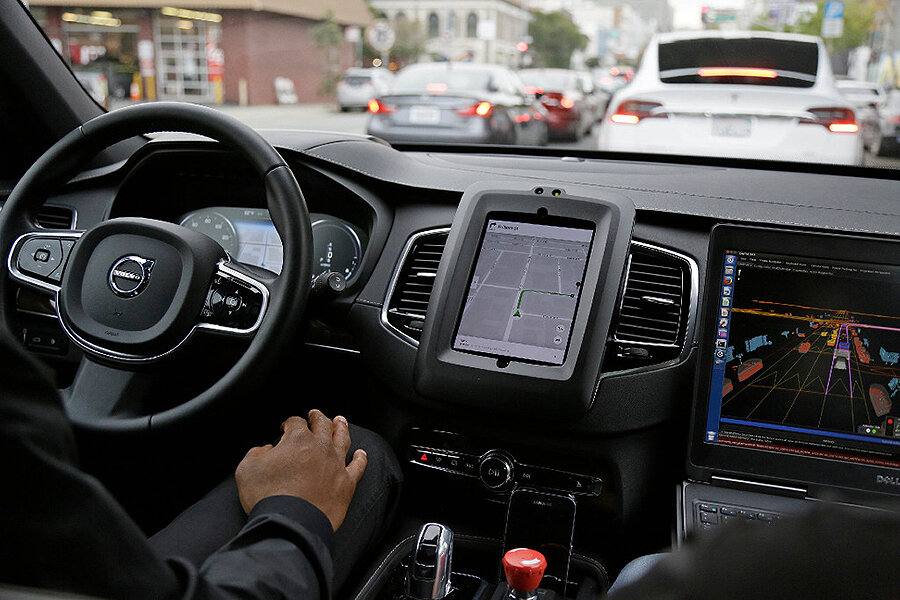Uber vs. California: What's an autonomous vehicle, really?
Loading...
Uber has pulled its self-driving cars from San Francisco, due mainly to a legal spat with the California Department of Motor Vehicles.
The California DMV revoked the registration of 16 autonomous Uber vehicles on Wednesday, none of which had secured permits per the state’s autonomous vehicle regulations. Uber has argued that its self-driving cars, which are partially operated by human drivers, shouldn’t require a permit.
“We’re now looking at where we can redeploy these cars but remain 100 percent committed to California and will be redoubling our efforts to develop workable statewide rules,” an Uber spokeswoman said in a statement.
California designates any vehicle that can drive “without the active physical control or monitoring of a natural person” as autonomous. Under state law, such vehicles require a special permit.
Uber has argued that its cars, which it refers to as "self-driving" but not "autonomous," don't fall under the requirement, as Uber requires a driver and an engineer to be present in the front seats at all times, ready to take over in unusual traffic conditions.
But this position drew the ire of the DMV and state attorney general, who threatened legal action unless Uber applied for the proper permits. San Francisco Mayor Ed Lee said he was “pleased to hear that the DMV took enforcement action.”
“I have always been a strong supporter of innovation and autonomous vehicle development and testing, but only under conditions that put human, bicyclist, and pedestrian safety first,” Mr. Lee said in a statement.
In a letter to Uber, DMV director Jean Shiomoto promised to “personally help to ensure an expedited review and approval process,” which could take as little as three days.
Uber has argued that it’s unnecessarily difficult for tech innovators to operate under California laws, since permitted projects must report crashes and any incidents of drivers taking manual control – which becomes public information. Twenty other companies working on autonomous vehicles, such as Google and Tesla, have received DMV permits in California.
Uber's attempt to position itself at the front of the race for autonomous cars is also reflected in its $500 million mapping initiative. Last year, the company debuted its first fleet of mapping vehicles on American roads, which are designed to gather more precise data on pickup and drop-off locations, as well as traffic patterns, reducing its dependence on third-party apps.
Despite legal setbacks, self-driving vehicles may "disrupt the car world sooner than many people think," as Richard Read wrote in a blog post for The Christian Science Monitor this spring. By 2030, some 400 million people will rely on autonomous cars, according to a report from ABI Research, and many of them may be owned by companies, rather than individuals or families.
For the time being, Uber plans to bring its self-driving cars to other major cities. The company hasn’t clarified whether its San Francisco program, which initially launched last week, will resume in the near future. Since September, it has also been testing the program in Pittsburgh.
This report contains material from the Associated Press and Reuters.








